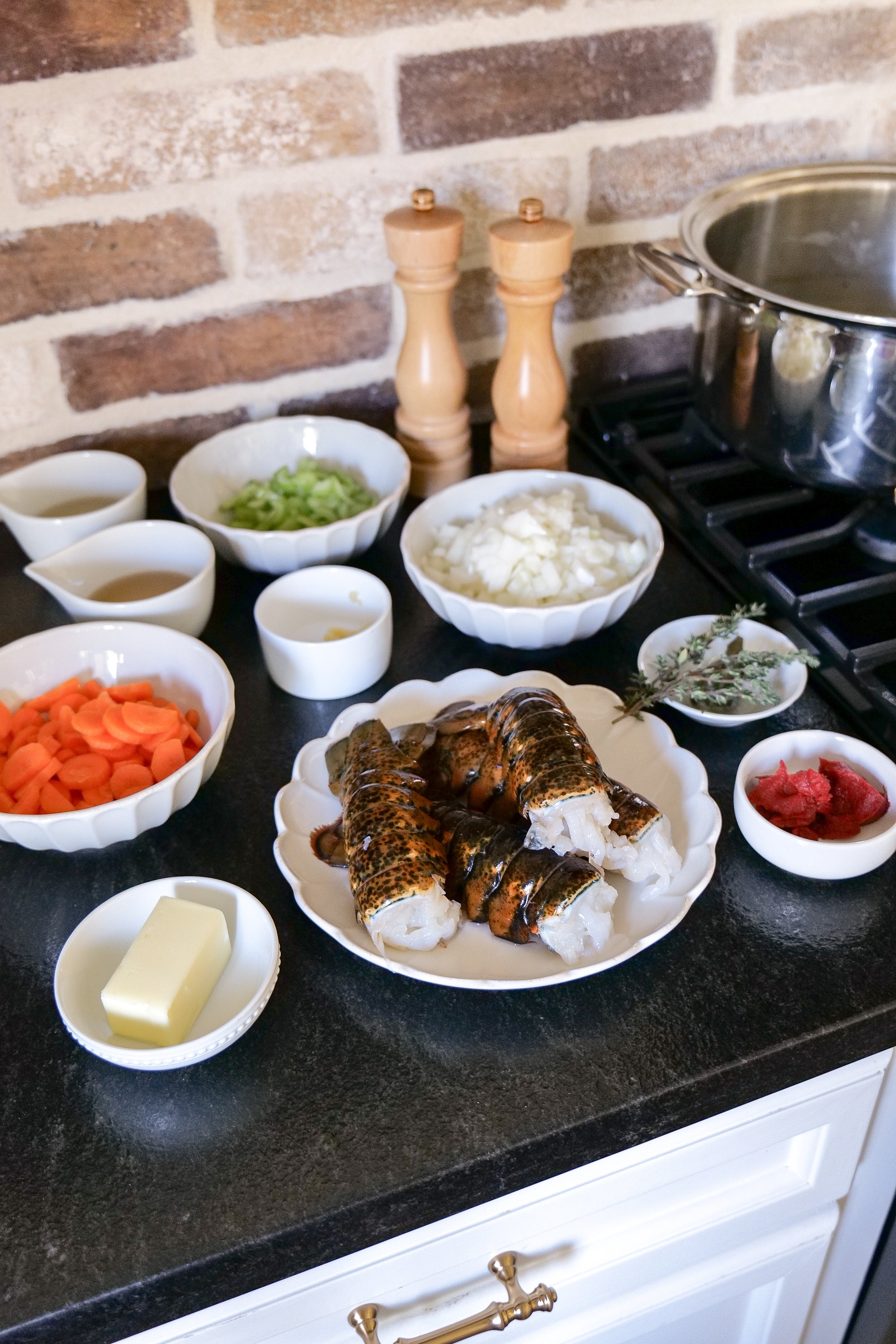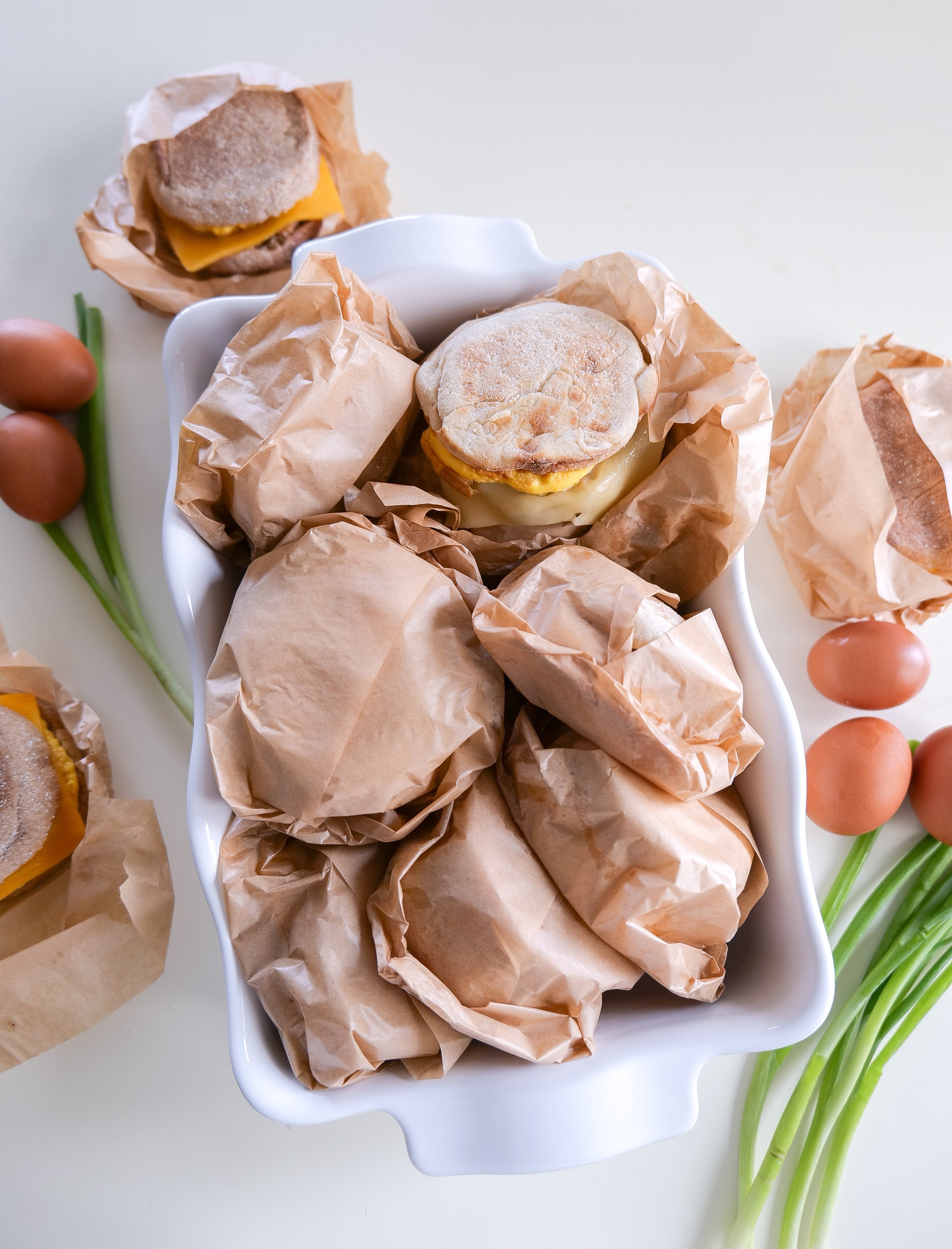Achieve Restaurant-Quality Lobster Bisque at Home: Simple Steps for an Unforgettably Delicious Dinner Experience!
/Creating a restaurant-quality lobster bisque at home might seem like a tough task, but with the right approach, it can be a tasty and rewarding experience. Lobster bisque is a classic dish that I love, and one that is known for its rich flavors and smooth, creamy texture. So, whether you're planning a romantic dinner or an elegant gathering with friends, making your own lobster bisque elevates any meal into a memorable occasion. This guide will walk you through the essential steps needed to master this sophisticated soup.
Discovering the secrets of restaurant-quality lobster bisque in your own kitchen can be an exciting adventure. With a few essential ingredients and techniques, you can achieve the rich, creamy texture and deep, savory flavors characteristic of this classic seafood soup. The key lies in following a step-by-step guide that simplifies the cooking process, making it easy enough for any skill level of home chefs. We'll explore tips for selecting the best lobster and options for substitutions or enhancements to tailor the bisque to your taste. By following these tips, you too can transform any meal into a special occasion with an unforgettable dining experience.
What is Lobster Bisque Made Of?
Lobster bisque is a creamy and flavorful soup that begins with a rich, homemade lobster stock. This luxurious dish draws its irresistible taste from a combination of fresh ingredients that are simmered to perfection. Essential components include fresh lobster, paired with aromatic vegetables such as onions, carrots, celery, garlic, and tomatoes. These elements provide the base flavors, which develop further depth with the addition of heavy cream and butter, resulting in a decadent texture. To enhance the bisque's complexity, herbs like thyme and bay leaves are added, as well as white wine, cognac or sherry.
The soup achieves its smooth consistency through careful blending, ensuring all ingredients are merged into a seamless blend. The final touch before serving often includes garnishing with chunks of tender lobster meat, adding an extra layer of sophistication and indulgence. Understanding these foundational ingredients and techniques allows cooks to appreciate the delicate balance of flavors that defines lobster bisque.
How Do You Thicken Lobster Bisque?
To achieve the perfect creamy texture in lobster bisque, understanding how to properly thicken it is very important. The process begins with making a roux, which is a classic technique involving equal parts butter and flour cooked together to form a paste that serves as a creamy base. Incorporating heavy cream or half-and-half towards the end of cooking enhances the richness and thickness of the bisque without compromising its flavor profile. Blending the bisque using an immersion blender or traditional blender ensures that the soup reaches its signature smooth and velvety texture while bringing together all its flavors perfectly.
Additionally, natural thickeners such as pureed vegetables like carrots or potatoes can be added to enrich the bisque further and enhance its nutritional content, if needed. Some cooks will opt to adjust the consistency by introducing a cornstarch or arrowroot slurry as well. Remember to always ensure the mixture is added gradually to achieve the desired thickness. Continuous stirring and care ensure the bisque turns out perfectly creamy.
What Alcohol is in Lobster Bisque?
Incorporating alcohol into lobster bisque is a time-honored tradition that enriches its already robust flavor profile. Often, a splash of dry white wine is used to enhance the bisque's savory flavors, providing an acidic balance to its creaminess. Some traditional recipes may include brandy or sherry, adding complexity with a touch of sweetness and depth. The alcohol content typically evaporates during cooking, leaving behind a nuanced flavor that elevates the dish. So, no need to worry about getting a buzz off of your soup. White wine, known for its citric acidity, plays a crucial role in balancing the bisque's richness. On the other hand, brandy or sherry provides warmth and sophistication, and pairs beautifully with the natural sweetness of the lobster. Opting for high-quality alcohol ensures these flavors complement rather than overpower and helps to achieve a gourmet experience.
Lobster Meat & What Kind To Use
The tender and succulent nature of lobster meat makes it an ideal ingredient for high-quality lobster bisque. Fresh lobster meat is the preferred choice for this dish, though frozen alternatives can be used when accessibility is an issue, ensuring convenience for home cooks. The meat's unique textures and flavors, sourced from lobster tails and claws, contribute significantly to the complexity of the bisque.
Choosing the right type of lobster is very important for making a great bisque. Live Maine lobsters are renowned for their sweet and tender meat, making them the ideal choice for this dish. Opting for fresh and sustainably sourced lobsters not only enhances flavor, but also supports responsible fishing practices.
Smaller lobsters actually tend to have more flavorful meat, which adds depth to soups like bisque. Proper cleaning and preparation of lobsters are essential, ensuring all the rich flavors are extracted effectively for your bisque. While frozen lobsters are available, they often compromise the dish's taste and texture, and I think are best to be avoided.
Proper preparation of lobster meat is crucial to achieving restaurant-quality results. This includes careful cooking methods and incorporating lobster shells in the stock to maximize flavor. The shells give additional depth to the broth, and makes sure the bisque has a rich foundation. Mastering the art of preparing lobster meat allows your bisque to reach new heights of sophistication and taste.
How to Serve Lobster Bisque
Serving lobster bisque involves a few key steps to ensure the dish is presented at its finest. Ensuring the bisque is smoothly blended and seasoned to taste beforehand is essential, and adjusting salt and pepper as needed can refine its flavor profile. The serving bowls you use should be warmed before plating to help maintain the bisque's ideal temperature throughout the dining experience.
Consider garnishing the dish with fresh herbs, such as parsley or chives, for an added pop of color and freshness that enhances the visual appeal. Accompanying the bisque with crusty bread or warm rolls complements its creamy texture nicely. Pairing the dish with a suitable wine, like a Chardonnay or Sauvignon Blanc, rounds out the meal for a complete and elevated dining experience.
How To Store and For How Long
Storing lobster soup correctly ensures it maintains flavor and safety for future enjoyment. Allowing the soup to cool to room temperature before storing helps prevent bacterial growth and maintains quality. Once cooled, transfer the soup into airtight containers, leaving a small amount of space at the top for potential expansion during storage. Use an airtight container to maintain its quality and prevent any contamination from outside odors or substances. It's generally recommended to consume refrigerated bisque within 2-3 days, ensuring it retains its creamy texture and rich taste. For extended storage, place the soup in the freezer, where it can be kept for up to 3 months. When you're ready to enjoy the soup again, thaw it in the refrigerator overnight and gently warm it on the stovetop to preserve its creamy texture.
Reheating the bisque gently on the stove over low heat is crucial, as high temperatures can alter its consistency. While freezing lobster bisque is possible, it is typically discouraged due to potential cream separation. Proper refrigeration practices can help maintain its integrity. Always check for any off odors or changes in texture before consuming leftovers to ensure both safety and quality.
Can I Make Lobster Bisque Without Heavy Cream for a Lighter Version?
Creating a lighter version of lobster bisque is possible by making smart ingredient substitutions. Coconut milk or cashew cream are excellent alternatives to heavy cream, achieving a creamy texture while helping to reduce calories. Thicken the bisque with a roux made from flour and a lighter butter or oil for a more delicate consistency.
Incorporating freshly pureed vegetables like carrots and celery can enhance richness naturally, preserving the dish's flavorful aspect. Using low-sodium chicken or seafood stock as a base allows you to control the salt levels, making the bisque healthier. Finally, a splash of white wine or lemon juice adds complexity and brightness without unnecessary fats or calories.
Ingredients
4 Lobster tails, medium sized
1/4 cup Butter
1 Onion, Chopped
2 Carrots, Chopped
2 Celery stalks, Chopped
2 Garlic Cloves, minced
2 Tablespoons Tomato Paste
1/3 cup dry White Wine
1/3 cup Cooking Sherry
4 cups Lobster Stock
1 teaspoon Fresh Thyme
1 Bay Leaf
1 1/2 Cups Heavy Cream
Salt & Pepper to taste
Fresh Parsley for garnish
Instructions
1. Boil lobster tails until cooked. Reserve 4 cups of water from boiling. Once lobster is fully cooked remove tails from shell. Keep shells and cut tails into bite-sized pieces, set aside.
2. In a large pot start building the base. Heat butter, add in veggies (onions, carrots and celery). Cook until softened and onions are translucent. Add in minced garlic and cook another minute.
3. Add in tomato paste and cook for a few more minutes to intensify the flavor. Once blended pour in white wine and sherry, cleaning around the sides and scrape up and bits from the bottom of the pan.
4. Now add in the lobster shells and stock from earlier. As well as the thyme and bay leaf. Let come to a simmer for 30 minutes.
5. After soup has simmered you'll remove from heat and take out the lobster shells and bay leaf from pan. Using an immersion blender puree the soup until smooth. If you prefer a chunkier soup you can of course skip this step.
6. Add in the heavy cream and bite-sized pieces of lobster meat (leave a little out if you would like to use onto for garnish). Cook for a few more minutes on medium-high heat. Season with salt and pepper to your liking.
7. Ladle the soup to a bowl and garnish with parsley and chunks of lobster. Serve and Enjoy!
Other Delicious Soup Recipes:
Deliciously Creamy Basil Tomato Soup: An Easy and Delicious Recipe
Easy & Flavorful Fiesta in a Bowl: Ultimate Slow Cooker Chicken Tortilla Soup Recipe!
Bring the Heat with this Deliciously Spicy Tortellini Soup
Delicious One-Pot Italian Lasagna Soup for Busy Weeknights!
An Alluring Combination: French Onion & Shallot Soup Recipe
Mom's Favorite Minestrone Soup Recipe
Deliciously Warm Your Soul: Guide to Creamy Corn Chowder Soup






















